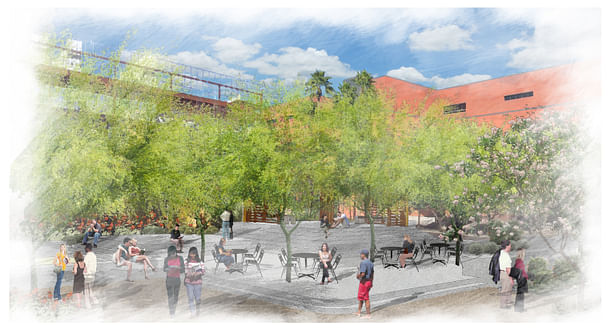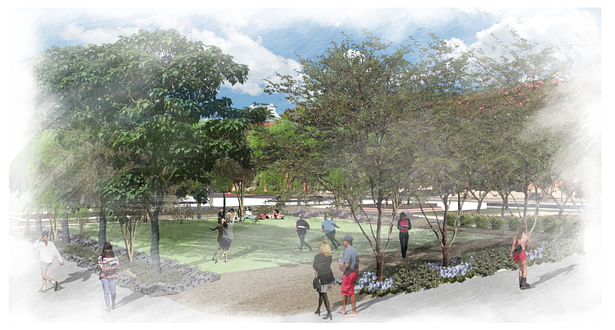

In order to thrive in the desert, adaptation to our surroundings is crucial. Just as the original dwellers of the area, the Hohokom, lived in harmony with the natural land, so must we in the urban grid. Adaptation seeks to increase the time of concentration of water and people on site in order to further this awareness and pioneer a sustainable future. Adaptation utilizes the flow and forms of the mountains & rivers in Tucson, with a synthesis of the adaptive Hohokam strategy of the past, and the urban grid of present. The Hohokam village structure consisted of clusters centered around a main gathering and open space, just as the outdoor classroom in relation to the turf on the west side. Divided by a major circulation route, the east side of the site lies a symbolic representation of the geography of Tucson interpreting the Catalina and Rincon mountains. The series of elevation changes as personal academic space are designed using the exact footprint of the mountains. Just as the urban grid serves Tucson presently, the grid is used to serve functionality and circulation on site. It offers the design a means of displaying the hybridization of past and present to serve user needs not only on site, but though the campus, community, and city.
Status: School Project
Location: Tucson, AZ, US
My Role: Team leader: responsible for site analysis, concept development, final plan and detail design.
